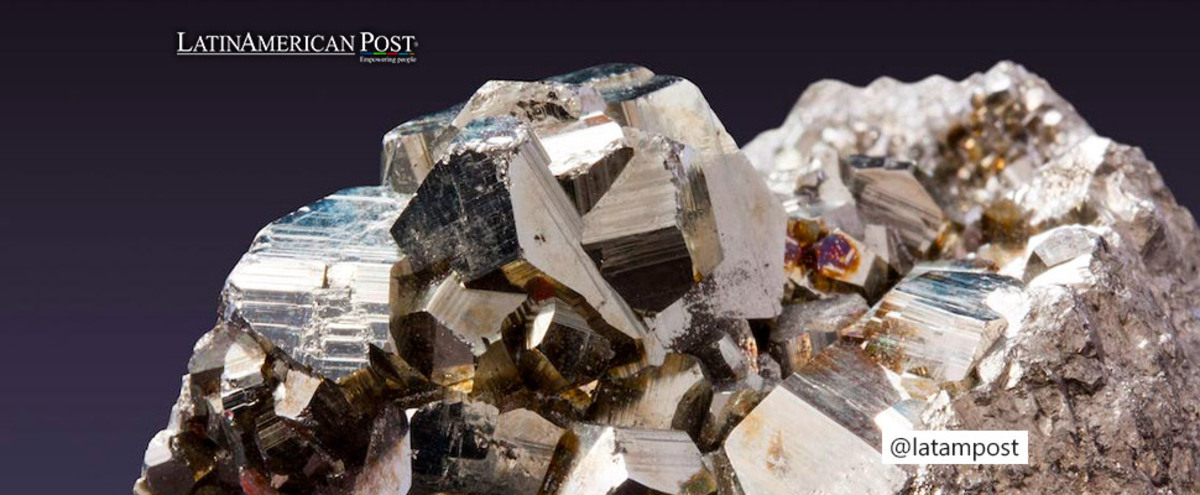Iron as Metal Fuel: A Potential Sustainable Energy Revolution
In the search for sustainable and efficient energy sources, scientists are testing previously unthinkable elements, for example, iron. This metal could mark a milestone in the energy generation of the future.

Photo: Pexels
LatinAmerican Post | Jorge F. Vuelvas Lomeli
Listen to this article
Leer en español: Hierro como combustible metálico: una potencial revolución de energía sostenible
Every element in the universe has the potential to combust or, in more colloquial terms, burn up in the presence of oxygen. However, doing it in a controlled and beneficial way is where the challenge lies. Achieving sustainable energy to have alternatives to fossil fuels, which cause global warming, is one of the most important goals of science. A team of researchers from McGill University in Canada and Eindhoven University of Technology in the Netherlands have made considerable progress in this regard by experimenting with a reaction called discrete combustion to convert iron into a viable sustainable energy source.
Iron as metallic fuel
These scientists have carried out experiments in zero gravity conditions, generating the necessary conditions for the iron particles used as fuel to float and burn discreetly. Such a combustion method, in which flames jump from one fuel source to another, rarely occurs naturally on Earth, making it even more interesting for research and potential large-scale use.
The research is leading to a new understanding of iron combustion and how it can be applied to power generation on Earth, and the possibilities are exciting. Researchers have built a pilot plant in the city of Budel, in the Netherlands, which is using iron as a fuel source to produce 1 MW of steam. But that's not all, the research team believes the production capacity could be viable on an even larger scale, and several start-ups are already investigating this carbon-free fuel to power their industrial processes.
In addition, iron as a source of energy is arousing the interest of space agencies, who see in it a solution to build sustainable lunar bases. Using solar power, iron and other metals could be turned into recyclable energy sources, revolutionizing power supply in space.
Just a decade ago, the idea of using iron for fuel seemed far-fetched. However, today it is the subject of research by scientists and engineers around the world, becoming a model technology for carbon-free alternative fuels. In the not too distant future, it may be powering our industry, our homes, and perhaps even our cars.
Advantages of iron as a fuel
There are several inherent advantages to using iron as a fuel source, underscoring its potential in the energy revolution.
-
Free of carbon emissions. One of the biggest benefits of using iron for fuel is its carbon-free nature. Instead of producing greenhouse gases like carbon dioxide, burning iron produces iron oxide, also known as rust. This is in contrast to traditional fossil fuels that emit large amounts of greenhouse gases and contribute to climate change.
-
Recyclable. The iron oxide produced by combustion can be recycled back into metallic iron using solar or wind power, making it a sustainable energy system. The recycling process involves reducing iron oxide in the presence of hydrogen at high temperatures, producing water and metallic iron that can be used again as fuel.
-
Iron abundance. Iron is one of the most abundant elements on Earth, and is found in abundance on other planets and celestial bodies. This means there is no shortage of iron for use as fuel, which cannot be said for many other alternative fuels.
-
Safe storage and transport. This metal is safe to store and transport, as it is not flammable at normal temperatures and does not present an explosion hazard. This is in contrast to many fossil and alternative fuels that require special precautions for storage and transportation.
-
Potential for space exploration. The combustion of iron can take place in the absence of gravity, making it perfect for use in space. The combustion residue, iron oxide, can also be useful in space missions, since it can be processed to extract oxygen.
But like any potential energy revolution, it's not all good news. In the next section, we will discuss the potential challenges and limitations of this emerging technology.
We recommend you read: Infographic: Climate Change: What Would be the Debt of the Countries for their CO2 Emissions?
Challenges and limitations of iron as a fuel
Despite its great potential, the use of iron as a fuel or sustainable energy source also presents several challenges and limitations that need to be addressed before its widespread adoption.
-
Energy efficiency. One of the main challenges in using iron as a fuel is energy efficiency. Currently, the process of recycling iron oxide back to metallic iron is energetically expensive; although this process can be powered by renewable energy, the amount of energy required can still be considerable.
-
Required infrastructure. Iron as a fuel requires a completely new infrastructure for its production, storage, transport, and use. Although metal is safe to store and transport, building the necessary infrastructure can be expensive and time-consuming.
-
Technology and scale of production. Although the concept of using iron as a fuel has been demonstrated in the laboratory, it has not yet been developed on an industrial scale. The technology to produce and recycle iron for fuel on a large scale is still developing. The transition to this new sustainable energy source will require time and large amounts of investment.
-
Environmental impact of iron mining. Although the metal is abundant, its extraction and refining are energy-intensive processes that can have significant environmental impacts. It is necessary to consider the full life cycle of iron as a fuel, including the impacts of mining and refining, when assessing its feasibility and sustainability.
So while iron has a number of attractive advantages as an energy source, we must not ignore the challenges that must be overcome before it can become a dominant energy source. As technology evolves, it will be necessary to assess these challenges and work on solutions to address them.




